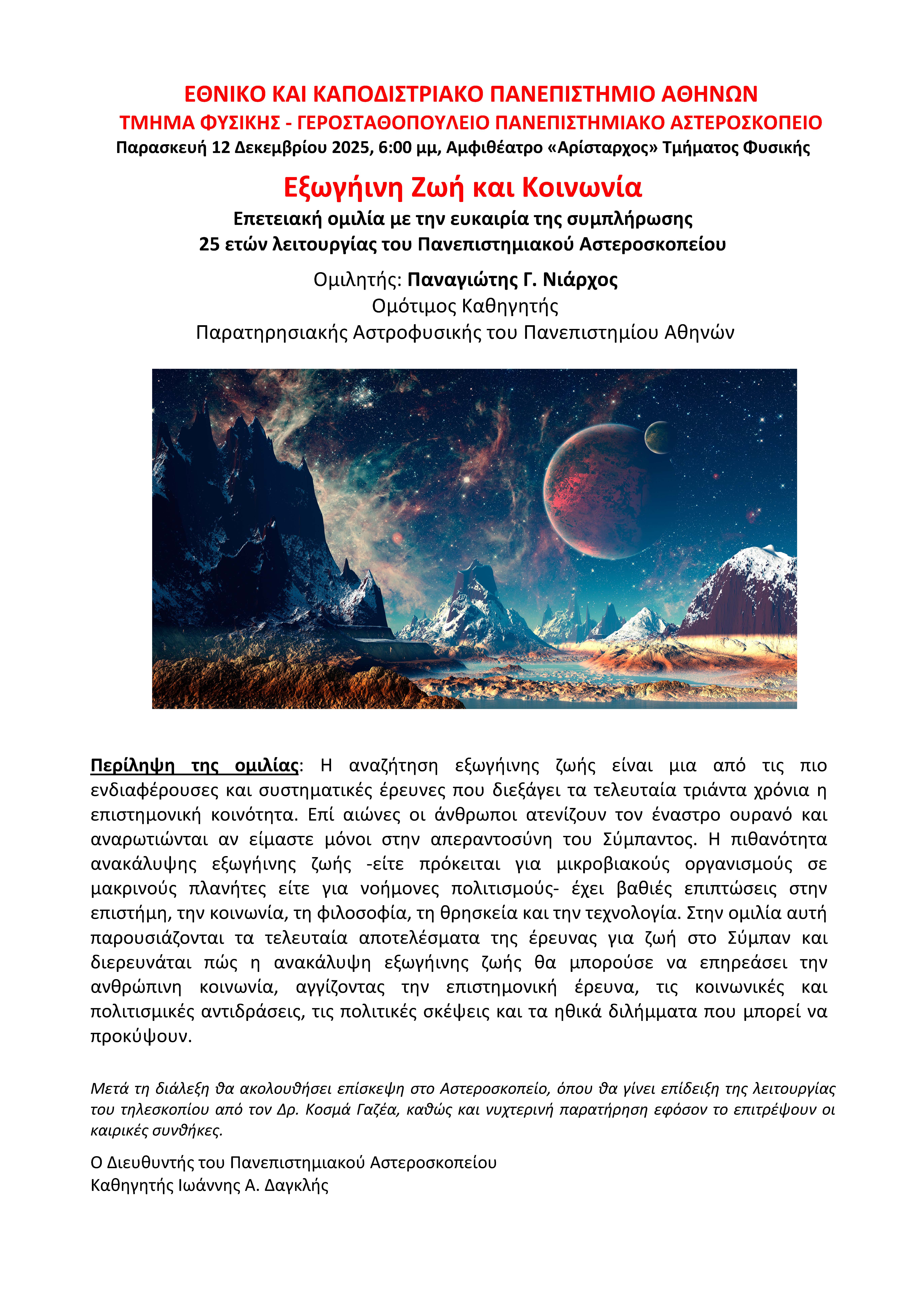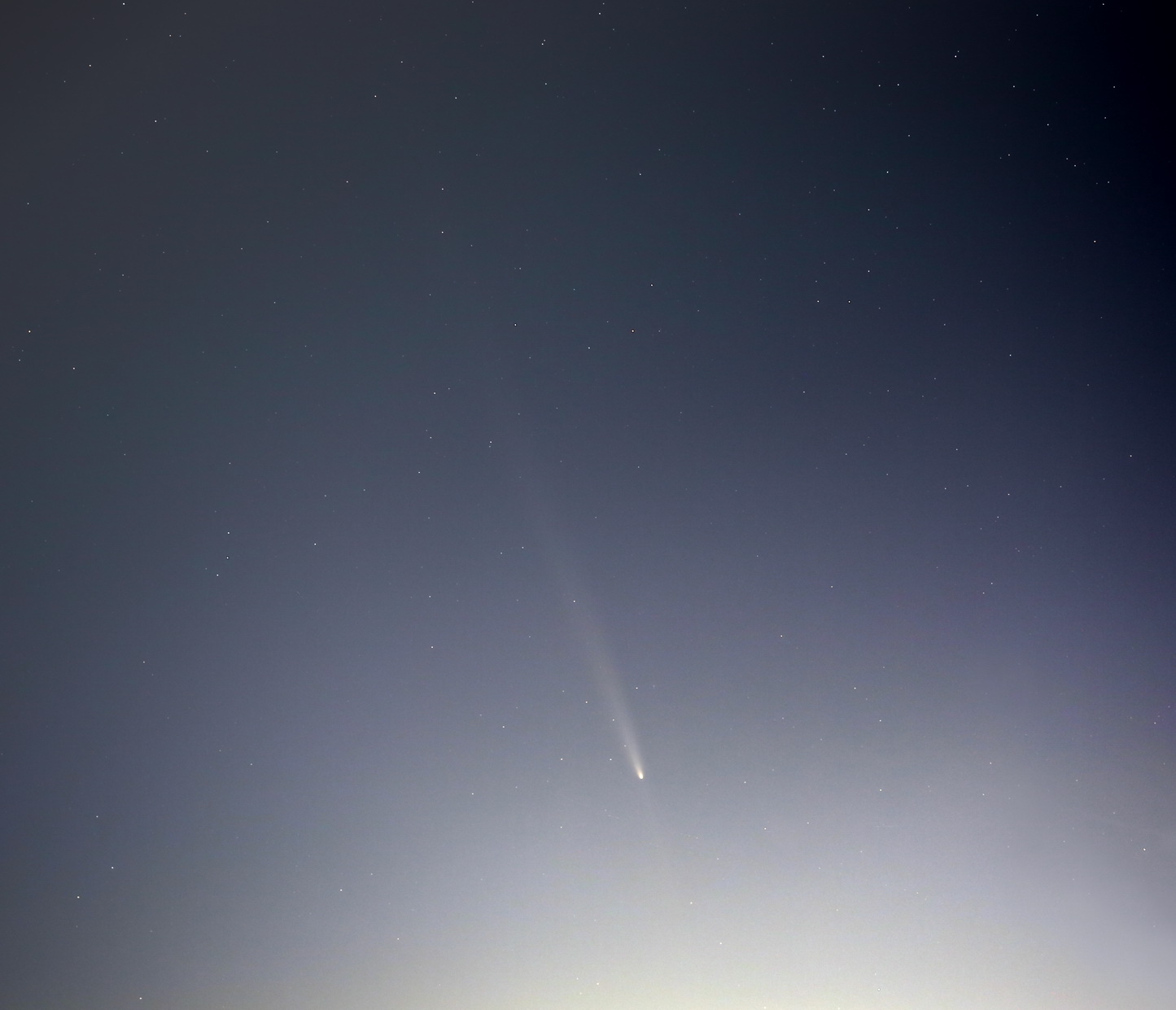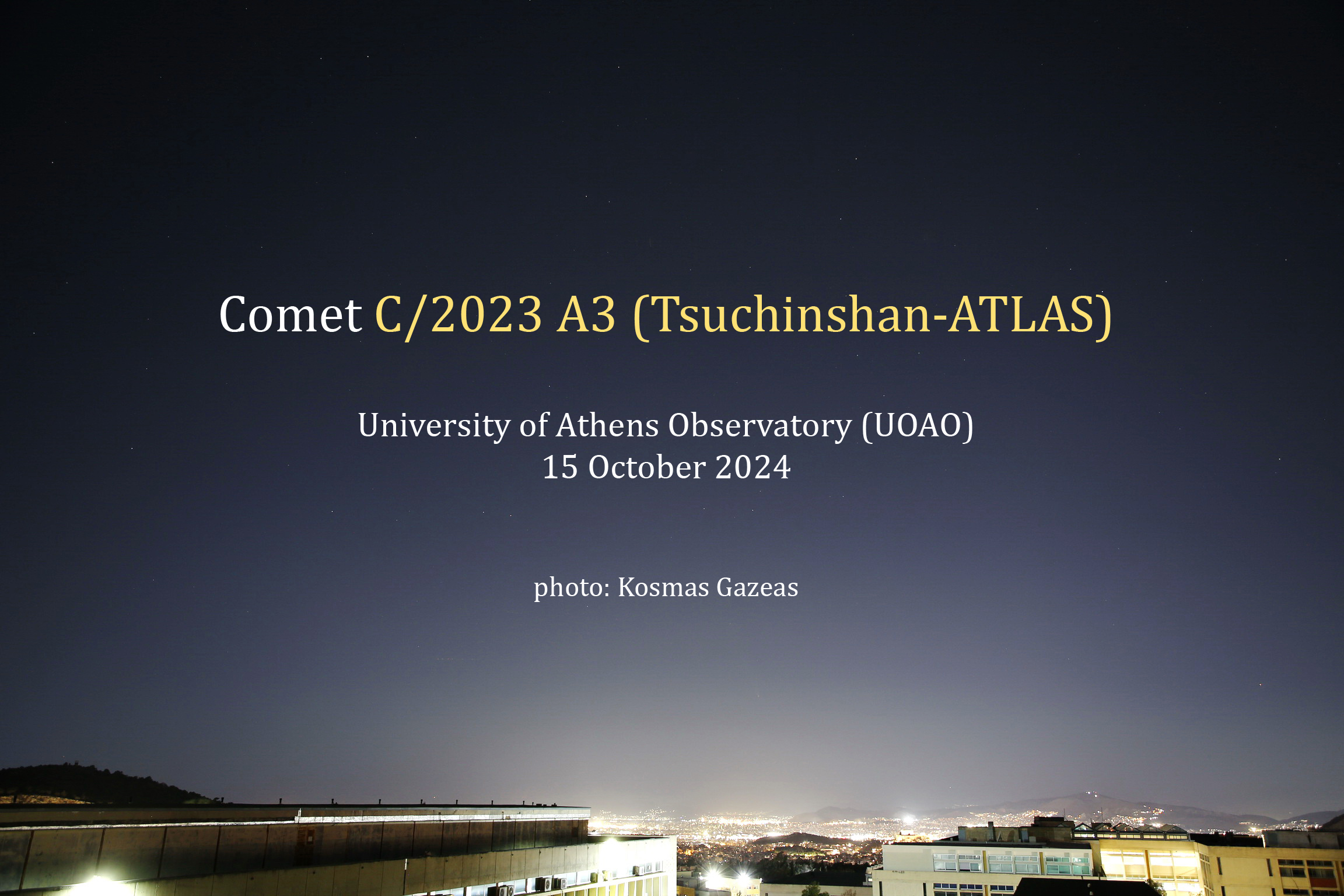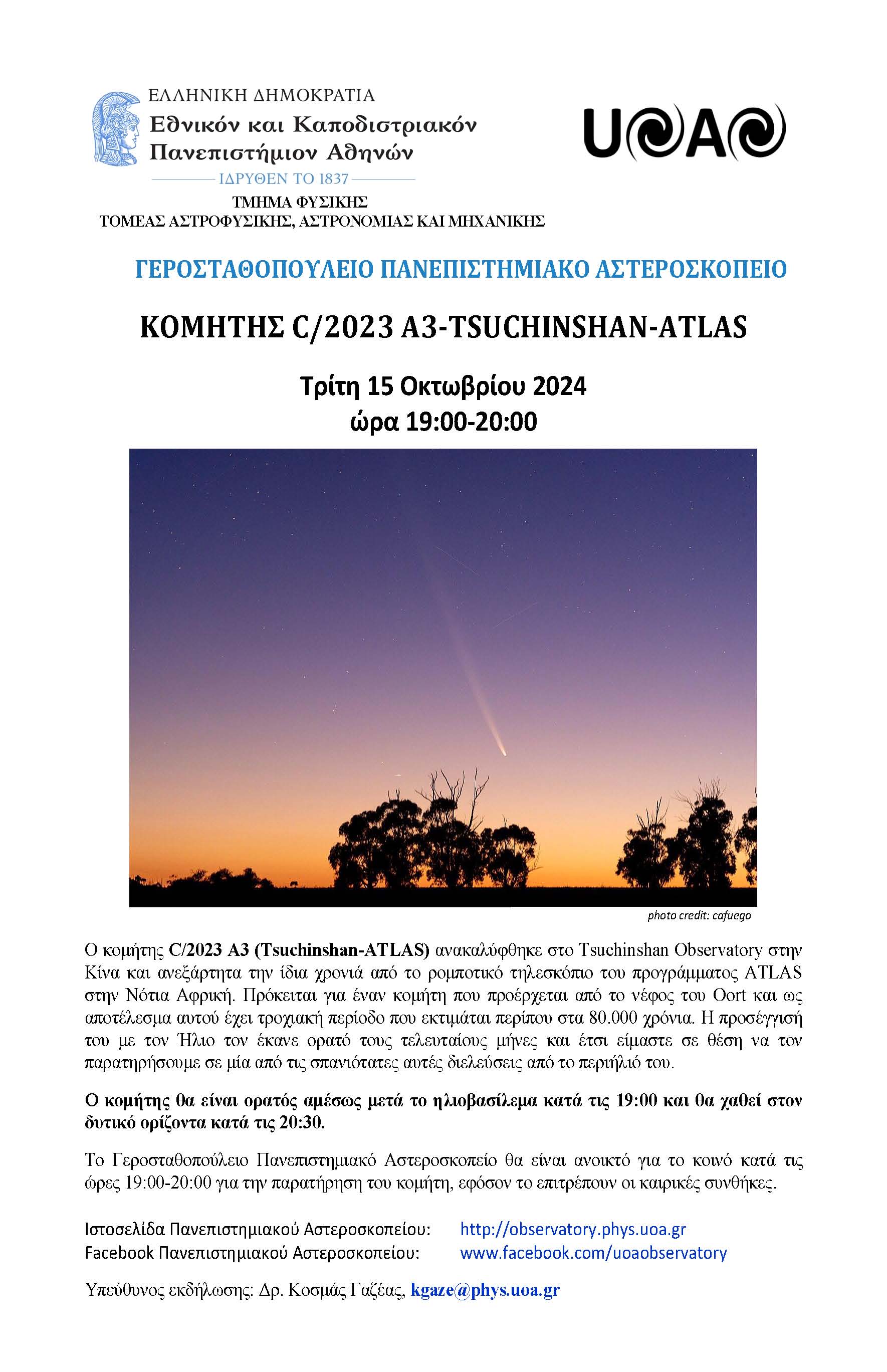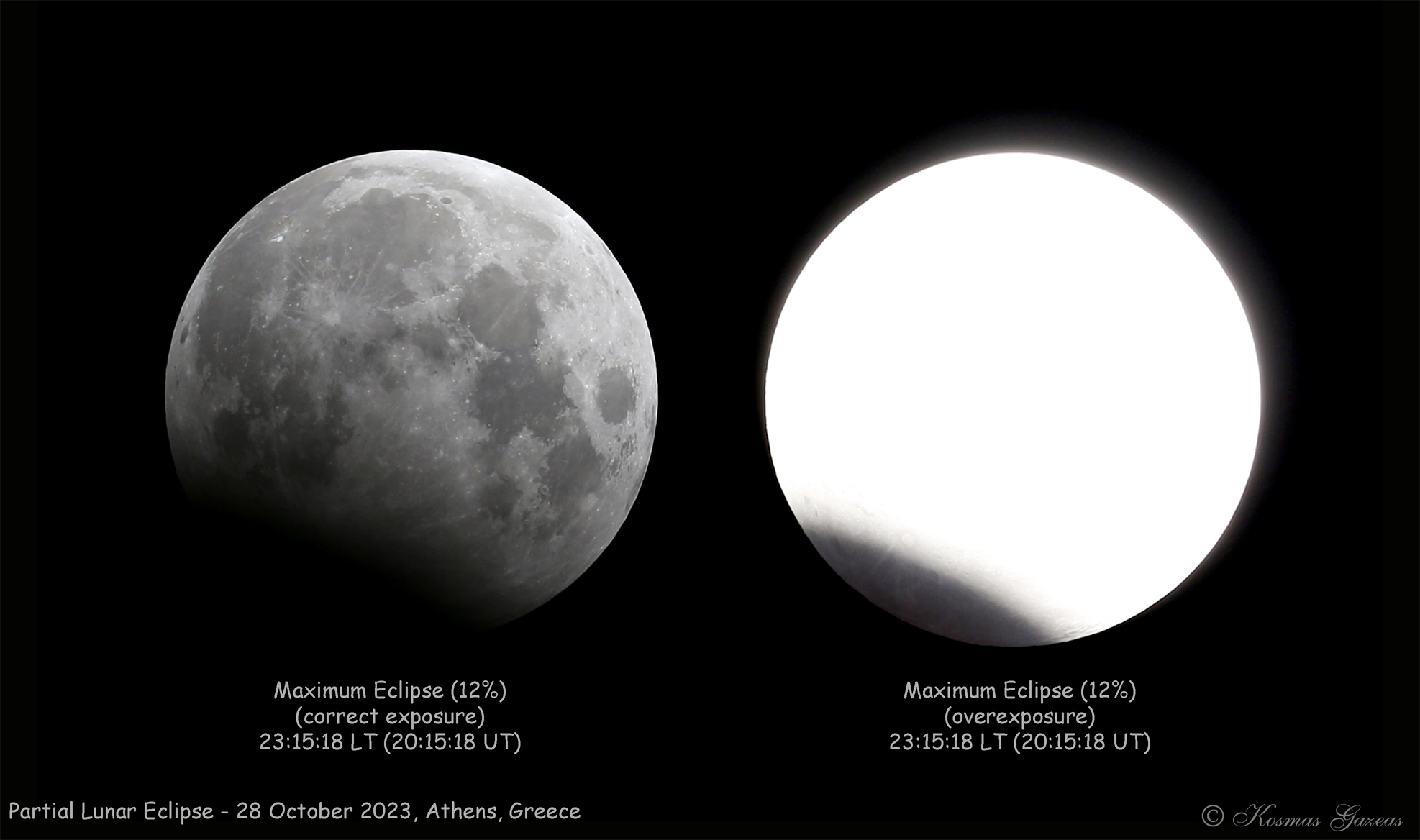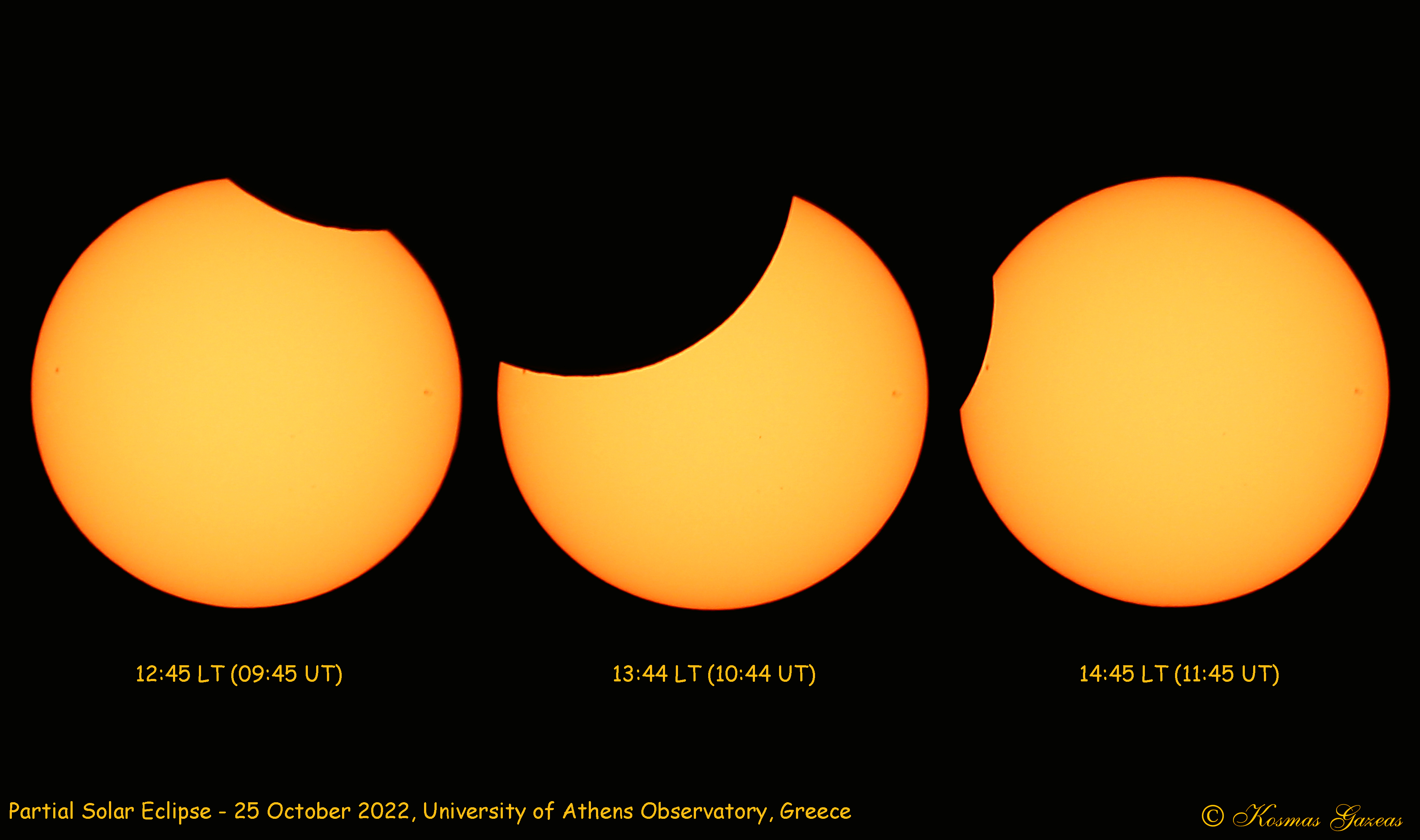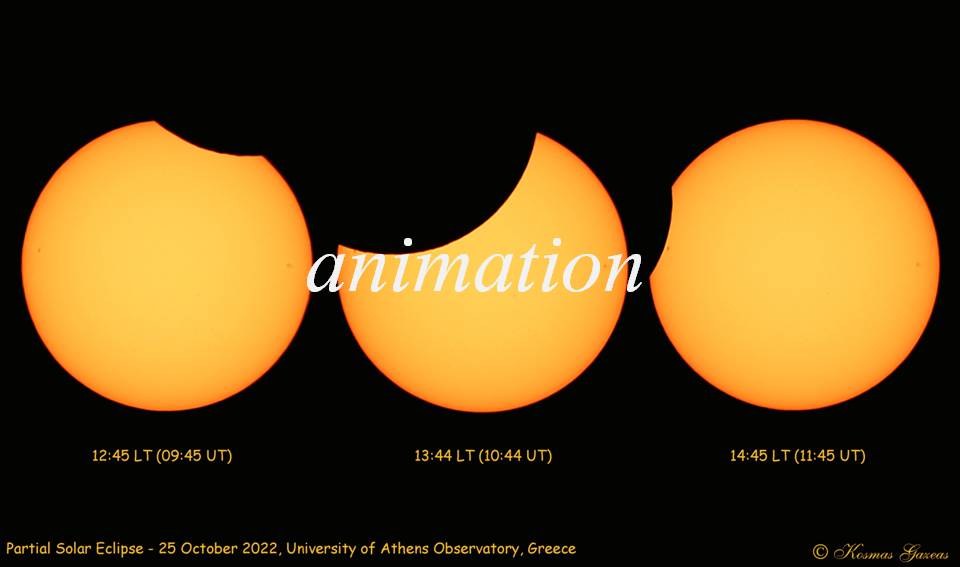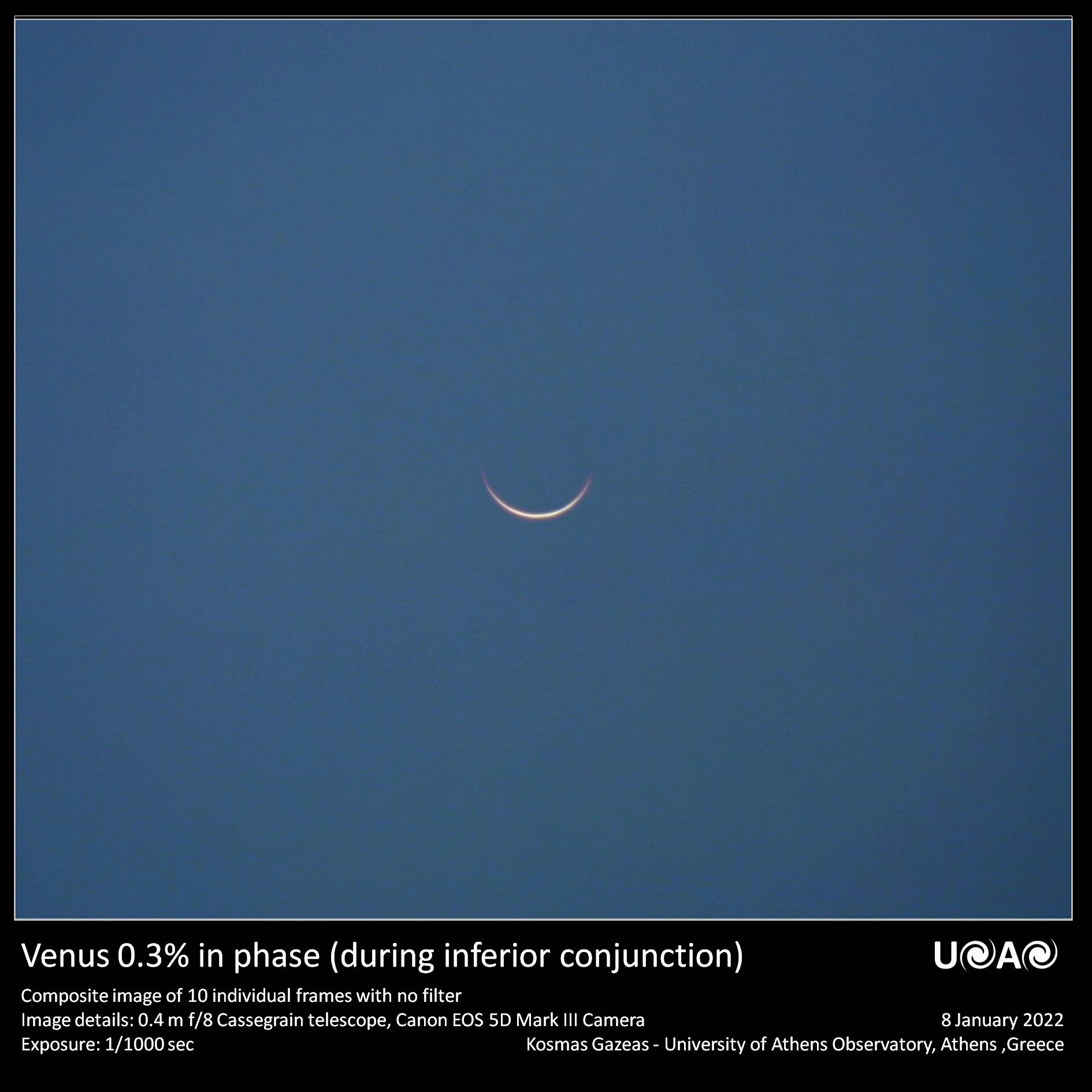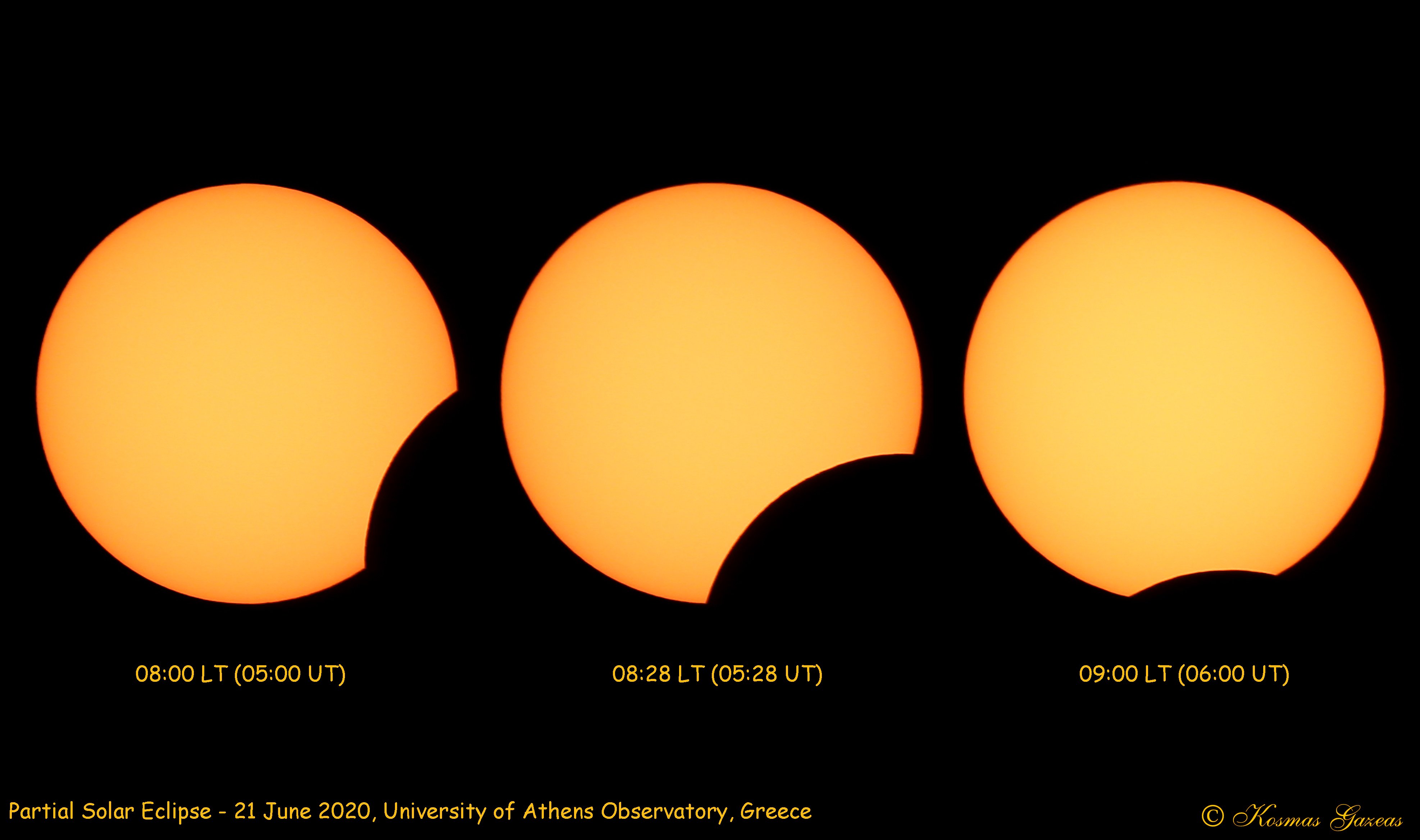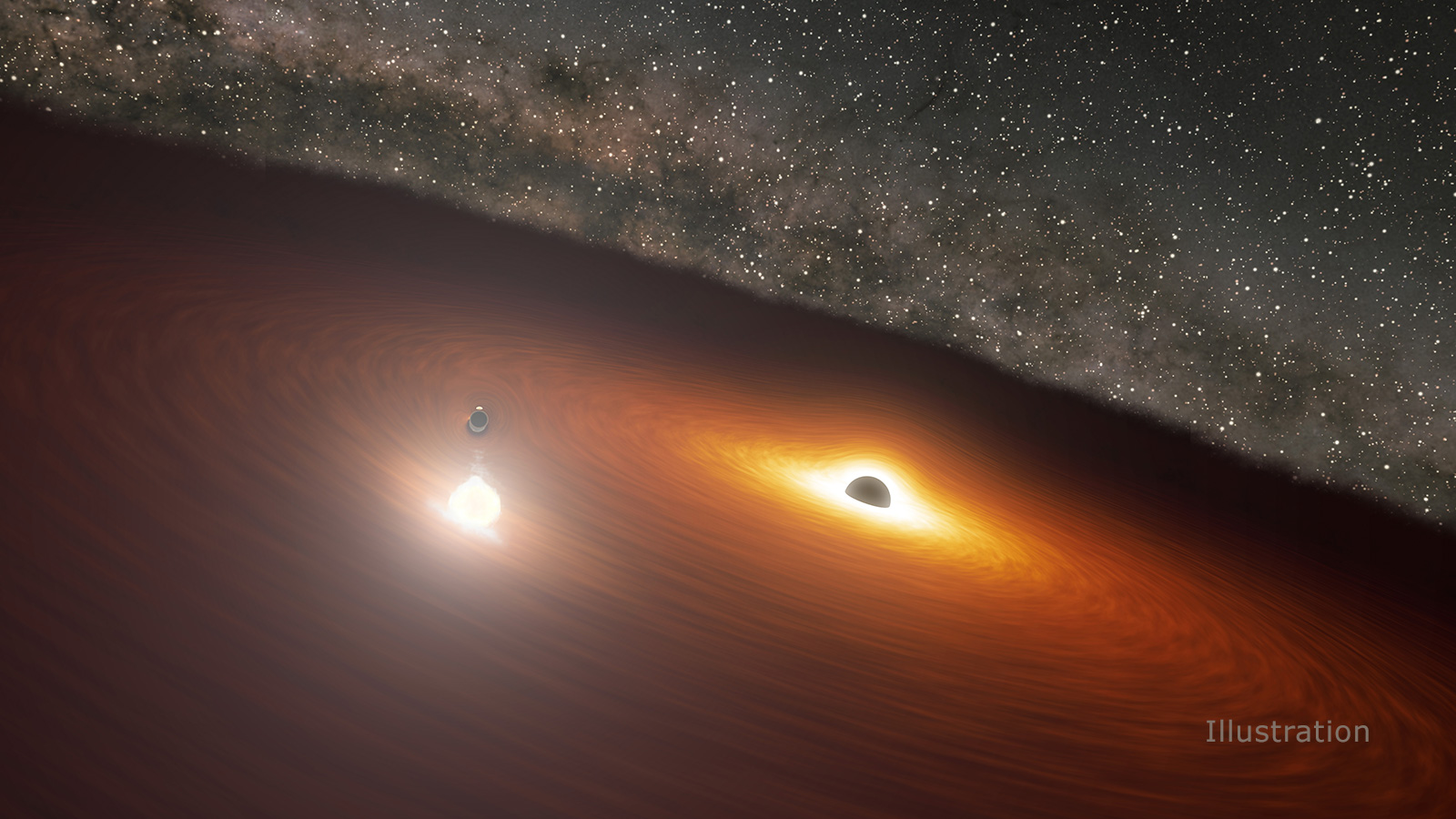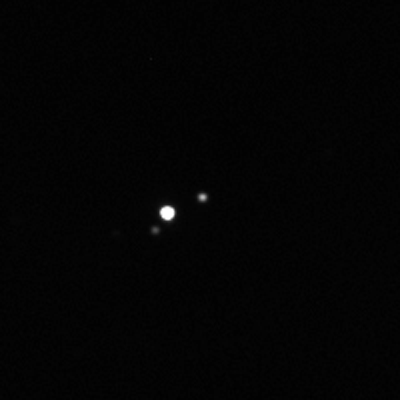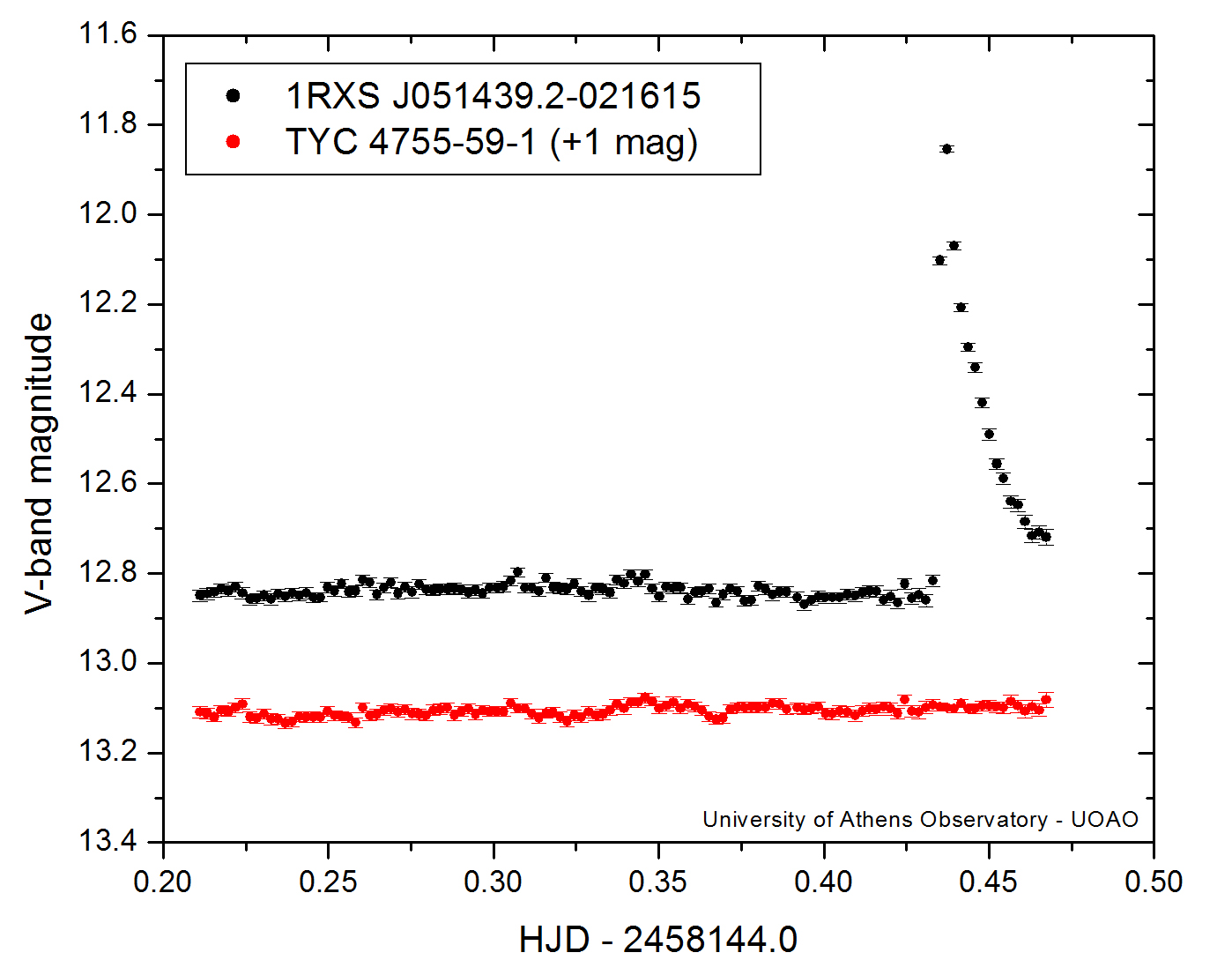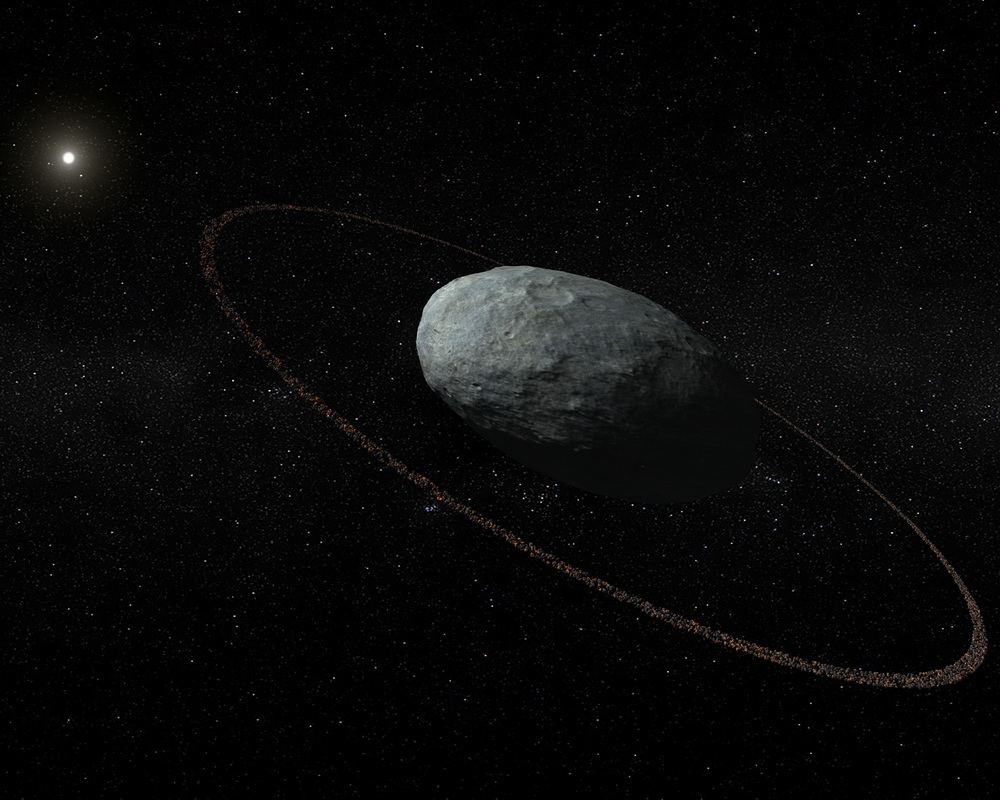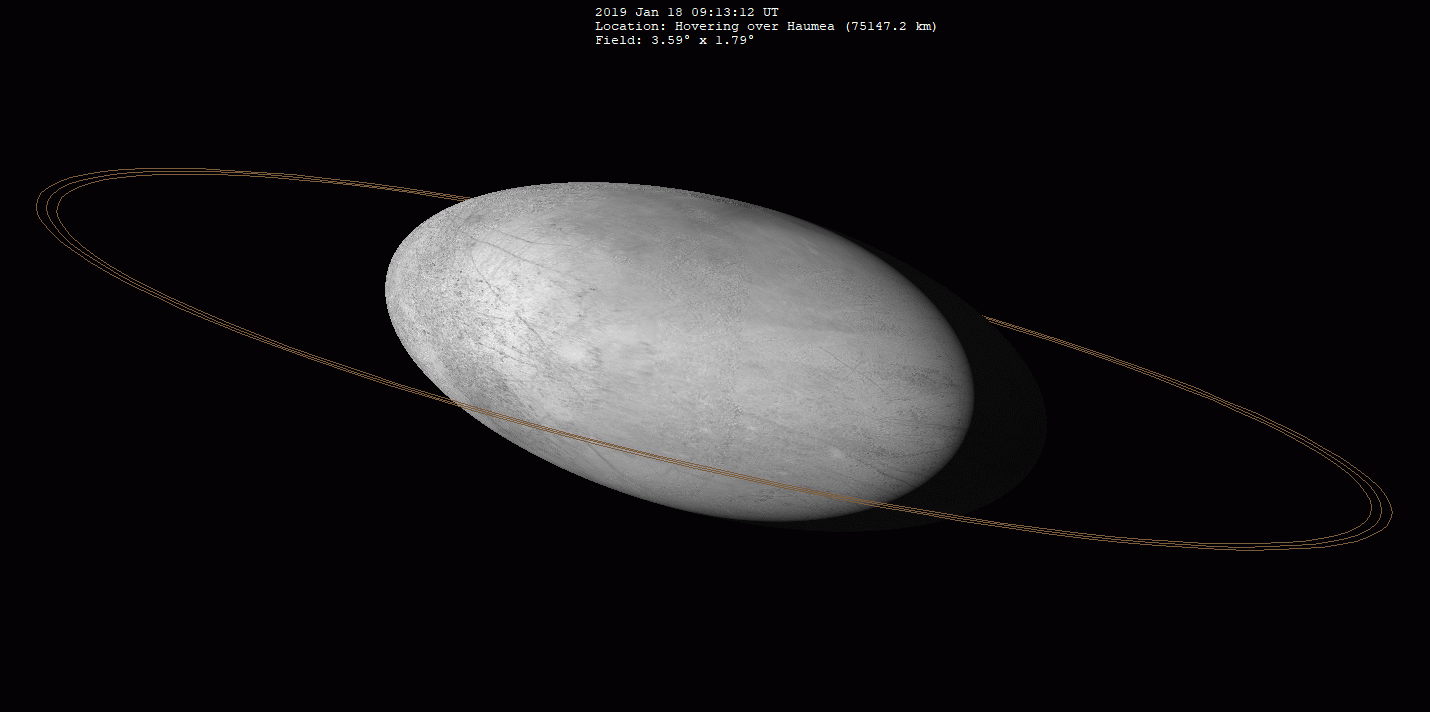Recent Astronomical News and Events
Our next public event is the talk by Em. Prof. P. Niarchos on 12 December 2025, at 18:00 at the Physics Department of the National and Kapodistrian University of Athens.
Observation of comet C/2023 A3 (TSUCHINSHAN-ATLAS)
Comet C/2023 A3 (Tsuchinshan-ATLAS) was observed observed and photographed by the University of Athens Observatory on Tuesday, 15 October 2024. Attendees had the opportunity to observe the comet through telescopes and binoculars, and the comet was visible even to the naked eye despite the intense light pollution on the western horizon above Attica.
Photography and image processing: Dr. Kosmas Gazeas
A photo of the comet is shown here:The photo is the result of a 15-second exposure, in which the nucleus, coma and tail of the comet can be distinguished, while the anti-tail is also very faintly visible, which extends in the opposite direction (downward).
An animated video pf the comet is shown here:The video consists of 400 individual 5-second images and captures the apparent movement of the celestial sphere due to the Earth's rotation. The comet gradually disappears in the western horizon, while at the same time airplanes crossing over Attica and the Peloponnese are visible.
Observation of comet C/2023 A3 (TSUCHINSHAN-ATLAS)
Comet C/2023 A3 (Tsuchinshan-ATLAS) was discovered at Tsuchinshan Observatory in China and independently with the robotic telescope of ATLAS program in South Africa. It is a comet that comes from Oort cloud and has an orbital period of approx. 80,000 years. These days it has approach our Solar System neighborood and we are provileged to observed it in one of its rare visits. The comet will be visible just after sunset at 19:00 until it is lost in western horizon at about 20:30.
The University of Athens Observatory will be open for the public between 19:00-20:00 for observing the comet, weather permitting.
Select image to enlarge:
Παλαιότερες Εκδηλώσεις
----------------------------------------------------------------------------------------------------------------------Partial Lunar Eclipse - 28 October 2023
On Saturday night in 28 October 2023 we had the chance to observe a rare partial lunar eclipse, which was visible from Greece. The Moon was obscured by only 12% behinf the shadow of Earth and a tiny part of the lunar surface was hidden for about 77 minutes between 22:35 and 23:52. The University of Athens Observatory was open to the public under the supervision of Dr. Kosmas Gazeas from 21:00, in order to observe and record the eclipse. Eclipse contacts:
-
ATHENS (Obscuration: 12%):
- Entrance at penumbra (start): 21:01 pm
- Entrance at umbra: 22:35 pm
- MAX: 23:15 pm
- Exit from umbra: 23:52 pm
- Exit from penumbra (end): 01:26 am
-->
Partial Solar Eclipse - 25 October 2022
On Tuesday 25 October 2022 a partial solar eclipse occured and it was visible from Greece. The entire (partial phase of the) eclipse lasted for 2 hours and 15 minutes. The most important timings were:
- Athens (Obscuration: 26%):
- Start: 12:36 pm
- Maximum: 13:44 pm
- End: 14:51 pm
ATTENTION: One sould NEVER observe the Sun with naked eye. Observations of the Sun through a telescope, as well as with any other optical aid
(binoculars, lenses, photographic cameras), should always be done with caution, using special filters.
For more information on the event and the observing methods, please follow the detailed observing information.
Observation of planet Venus during inferior conjunction
Planet Venus was at inferior conjunction with the Sun and Earth during the first days on 2022. The celestial observers had the chance to watch a thin crescent of Venus even with a small telescope during the day!
The telescope at UOAO captured the thin crescent of Venus duringt the day, when the planet was at its closest apparent distance from the Sun.
The apparent distance between Venus and Sun was almost 4 degrees, making such a photo increadibly difficult!
Partial Solar Eclipse - 21 June 2020
On Sunday 21 June 2020 a partial solar eclipse was visible from Greece and it lasted 1 h and 22 min. The most important timings were:
- Athens (Obscuration: 11%):
- Start: 07:49 am
- Maximum: 08:28 am
- End: 09:11 am
ATTENTION: One sould NEVER observe the Sun with naked eye. Observations of the Sun through a telescope, as well as with any other optical aid
(binoculars, lenses, photographic cameras), should always be done with caution, using special filters.
Announcement
The recently retired infrared observatory was the only telescope to spot a far-off flash of light that holds clues about the physical characteristics of these cosmic mysteries. Black holes aren't stationary in space; in fact, they can be quite active in their movements. But because they are completely dark and can't be observed directly, they're not easy to study. Scientists have finally figured out the precise timing of a complicated dance between two enormous black holes, revealing hidden details about the physical characteristics of these mysterious cosmic objects. The OJ 287 galaxy hosts one of the largest black holes ever found, with over 18 billion times the mass of our Sun. Orbiting this behemoth is another black hole with about 150 million times the Sun's mass. Twice every 12 years, the smaller black hole crashes through the enormous disk of gas surrounding its larger companion, creating a flash of light brighter than a trillion stars - brighter, even, than the entire Milky Way galaxy. The light takes 3.5 billion years to reach Earth. Orbital and ground-based observations have been combined, in order to unveil the fast changing orbit. The University of Athens Observatory (UOAO) has a significant contribution on this study, as it observes OJ287 since 2006 in the frame of 'BOSS Project', which monitors photometrically the brightest blazars. "It is important to black hole scientists that we prove or disprove the no-hair theorem. Without it, we cannot trust that black holes as envisaged by Hawking and others exist at all," said Mauri Valtonen, an astrophysicist at University of Turku in Finland and a coauthor on the paper.
The original publication paper can be found here: (publication)
For further information, you can visit Spitzer, JPL, NASA, BBC News:
Optical activity of the X-ray source 1RXS J051439.2-021615
The X-ray source 1RXS J051439.2-021615 (RA 05h14m39.20s, Dec -02d16m15.00, J2000.0) showed an optical V-band flare, during the night of 25/26 January 2018 (JD=2458114). While the source had a relatively stable luminosity of V=12.84(1) mag during the past days, there was a sudden increase of the observed flux, which started at HJD=2458144.43313 and reached the peak of V=11.85(1) mag at HJD= 2458144.43741 within a few minutes. TYC 4755-59-1 was used as a comparison for the photometric reduction and it was found to be a good standard with V=12.11(1) mag. The observations were obtained in a 3-min cadence and the brightness was increased by 1 mag within 9 minutes with a slope of ∼0.11 mag/minute. An exponential decline was observed until the end of the night, when the magnitude dropped from V=11.85(1) mag to V=12.72(1) mag in approximately 45 minutes. Multi-wavelength observations on this X-ray source are highly encouraged, while the robotic and remotely controlled telescope at the University of Athens Observatory (UOAO) will continue to follow the target in BVRI optical bands in the following days. Questions regarding the current flare and data availability should be directed to Dr. Kosmas Gazeas (kgaze@phys.uoa.gr). A light curve sample can be found below:
New Discovery: Dwarf planet Haumea has rings!
While watching a tiny planet eclipse a very distant star, astronomers made an unexpected discovery: The elongated dwarf planet Haumea hosts a 43-mile-wide ring of particles and debris. Haumea is now the first official dwarf planet found to host a ring system, while we knew that this was only a priviledge of the four giant planets of our Solar System (Jupiter, Saturn, Uranus, Neptune) and of the small asteroid Chariklo. The discovery also marks the first time anyone has found rings around an object in the Kuiper belt, a region of icy bodies out beyond the orbit of Neptune.The University of Athens Observatory (UOAO), and more specifically Dr. K. Gazeas and the student L. Tzouganatos, participated to this observing campaign, while the scientific results are published through the refereed journal Nature.
The original paper can be found here.
A thin band of debris circles the dwarf planet Haumea in an illustration based on the latest discovery. (Illustration by IAA-CSIC/UHU) Read more here: wiki and here: (information)Special Events during the academic year 2023-2024
Special public events organized during the academic year 2023-2024:
